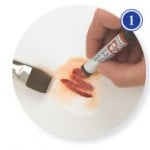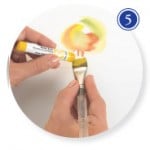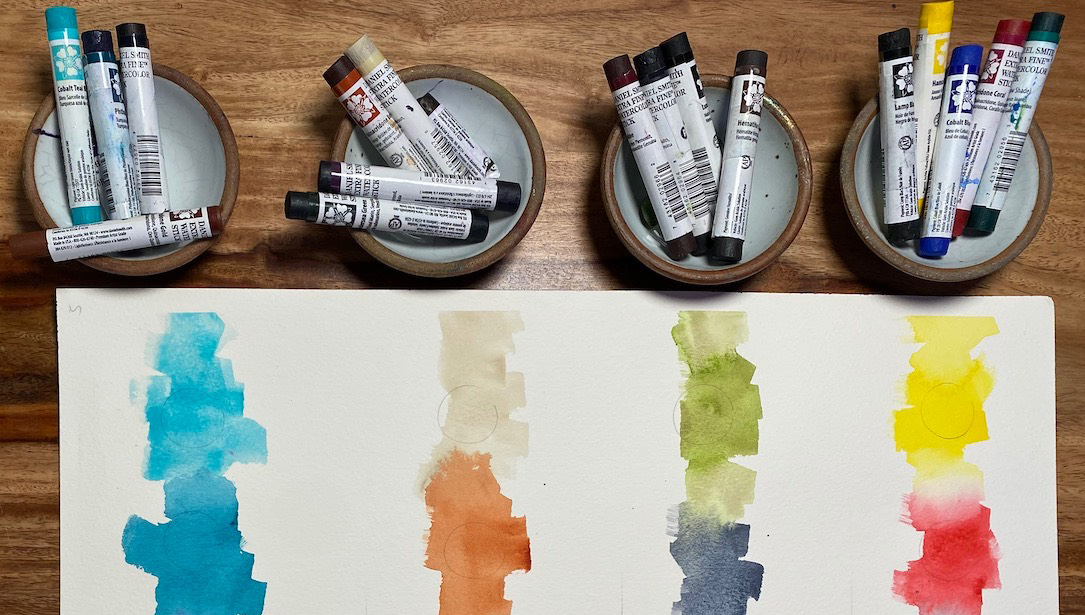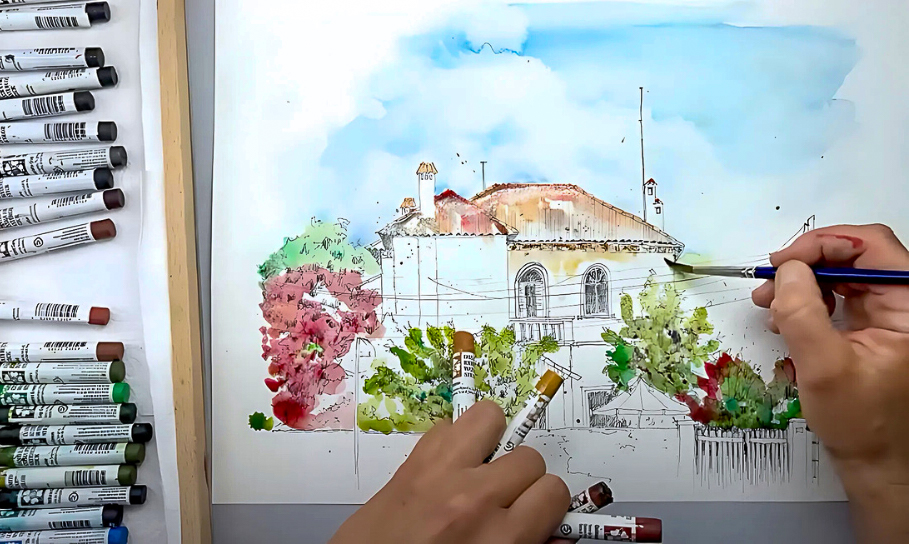Like many artists, I am continuously looking for new and exciting materials to broaden my artistic horizons. Although the staples in my studio always have their place, there is a unique inspiration that comes from trying a new technique of working in an entirely different medium. Discoveries are made, new ways of seeing can develop, and often the challenge is worth the reward of creating work that you might not otherwise have considered. DANIEL SMITH Watercolor Sticks are a great way for painters to get back in touch with drawing or for artists who typically sketch to add painterly color.
They really are unlike any artists’ material I have used. These handmade sticks look similar to a pastel; however, they are very solid and dense. The are wrapped in a label that keeps the sticks neat and clean during watercolor techniques. The weight of the sticks and their dark, rich color let me know right away that these sticks are loaded with pure pigment. To experiment, I chose subjects I am familiar with. I often paint birds and decided to try a pheasant and peacock – two birds with bold color and dramatic markings.

Making marks
For the peacock study, I liberated my brush and focused on making marks with the sticks, only using brushwork for the finishing details and touches. I started with a sheet of hot-press watercolor paper, stretched on a board and dampened with a spray bottle. Hot-press paper is a nice surface for drawing with the sticks as the smooth surface allows the lines to flow. I started my drawing by tapping Sap Green, French Ultramarine and Quinacridone Burnt Orange sticks to the wet paper anywhere I wanted to add color and value.

Taking shape
Keeping the paper damp really draws out the pigment and I worked fast to create an impression of the peacock with dots and dashes of color, adding some yellow to the back and Burnt Umber to the wings. Watercolor Sticks have a very high pigment load and my drawing quickly became saturated with bold color.
After creating the shape of the bird, I added details first with the sticks and then with a brush. The spots of the peacock’s tail feathers were made by dipping the tops of the sticks into water and drawing “U” shapes, with one color nested into another.

Adding depth
To add depth, I applied Sap Green and French Ultramarine on the top of the tail, and then used my brush to draw down a more subtle wash of color toward the bottom. I added detail to the head and beak by touching a wet brush to the stick and painting, similar to using a pan of watercolor. A dab of white gouache finished the head and eye on this quick study.
The pheasant began as a rendering using the sticks on cold-press watercolor paper. I drew the body shape, wings and tail on dry paper. For plein air outings, this would be a very convenient way to create a sketch that could easily be transformed into a watercolor painting at a later time. I wet the paper and blended the color.

Making a wash
While the paper was still wet, I created marks and texture by drawing with Burnt Umber and Sap Green. I let the paper dry and made an orange wash with shavings (using a handheld pencil sharpener) from the Quinacridone Coral and Hansa Yellow Medium in a small dish.

Glazing
I glazed the entire body with the light wash and went back into the dark areas with the sticks of Burnt Umber and French Ultramarine while the wash was still wet. I finished the head by using the Quinacridone Coral and Hansa Yellow Medium sticks with a brush. White gouache was applied for highlights on the face and feathers.

I made some unexpected, yet pleasant observations at the completion of my studies. My water jar was nearly clear, the Watercolor Sticks still looked brand new and there was no messy palette to contend with. My use of a paintbrush was kept to a minimum so the pigment went directly to the paper and stayed there – a convenient and economical way to achieve great results. DANIEL SMITH Watercolor Sticks are a pleasure to work with and will easily find their way into my studio and travel kit.






